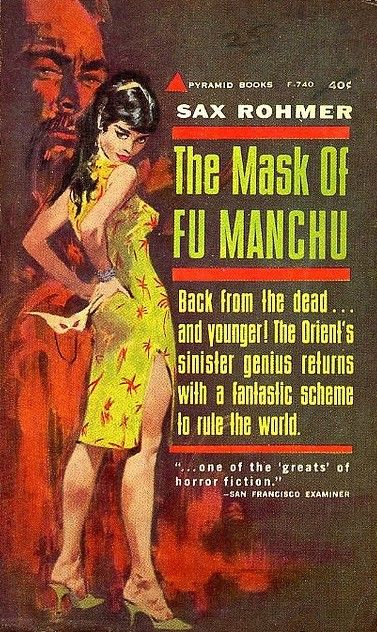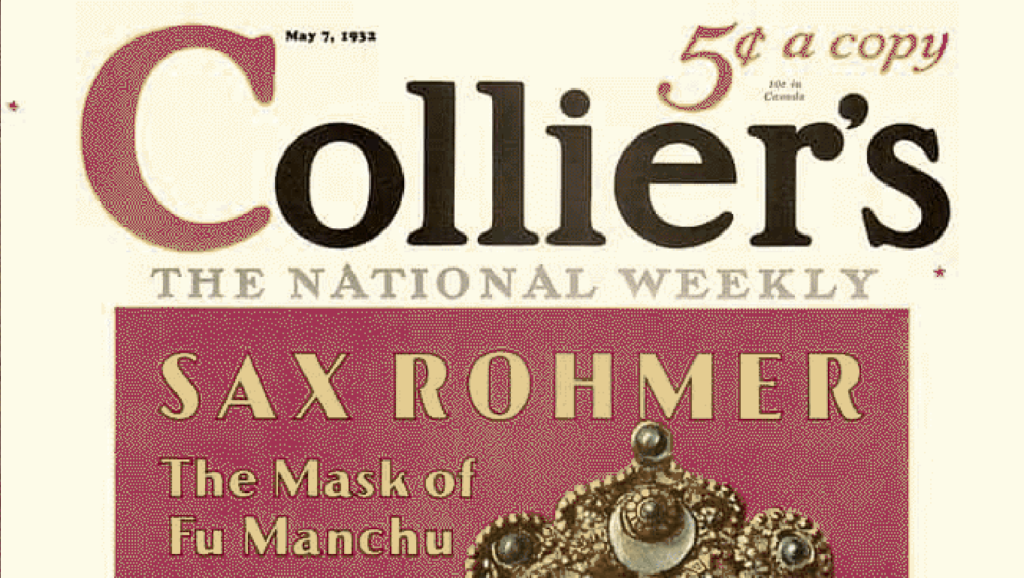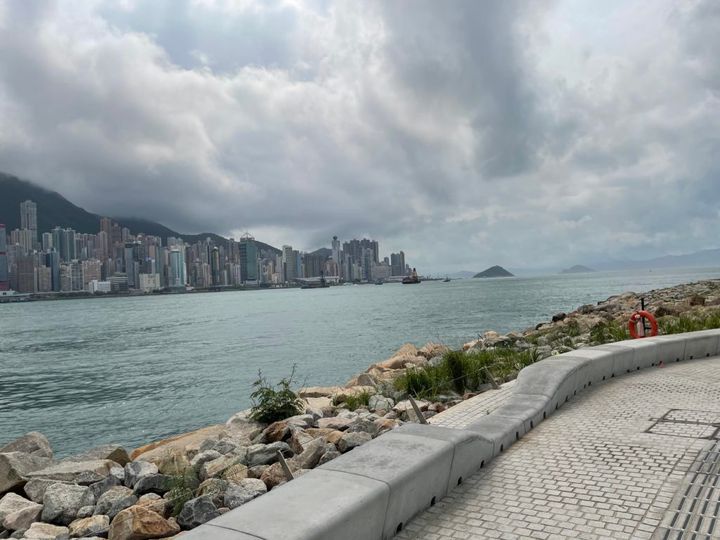According to a recent study that analysed tweets from 9 March to 23 March 2020, corresponding to the week before and the week after President Donald J. Trump’s tweet with the phrase, “Chinese Virus,” there was a significant increase in anti-Asian hashtags associated with #chinesevirus when comparing the week before 16 March 2020 to the week after.[1] Whilst awareness of a “Chinese connection” dates back to media coverage in January 2020 of China’s first COVID-19 outbreak in Wuhan, it was Trump’s tweet that ethnicized, and indeed weaponized, COVID-19 as the “Chinese virus”. This “connection” has lodged in the dominant white collective imagining of “the Chinese”, and now must be counted with the handful of other myths and scraps of “common sense”, as Gramsci intended the term, that go to make up that imaginary. When people learn nowadays that I am “Professor of Chinese Studies” it is the question they are burning to ask: “So what about COVID and China?” Meaning, do you think China was responsible for unleashing the COVID pandemic. And, of course, “China” never just “stands for” the Chinese body politic, or the “Chinese authorities” as journalists lazily or, let us be more generous, innocently pretend it does. “Chinese” leaches into the popular imagination as “the Chinese population”, and by association anyone who may look Chinese to the white eye. Since the political demise of Trump, we are reminded less often by the media of the “Chineseness” of the virus, and yet without any doubt one of his “legacies” is that it stuck in people’s minds.
But recent hate crimes, both in the USA and the UK, against people of Chinese appearance are not simply a knee-jerk reaction brought on by the reporting of Chinese people eating bat soup in Wuhan at the end of 2019 and thus deemed guilty of propagating COVID-19. The negative image of “the Chinese” has been anchored in the British popular imaginary, fuelled, reinforced and readily redeployed by the popular press, popular entertainment, “low-brow” fiction, and elite history for over 150 years. A history of the way the Chinese in the UK have been represented would necessitate an examination of the language and the imaginary through which today’s anti-Chinese sentiment and violence is expressed. Thus, keywords and phrases found today in the popular press we first find used in late nineteenth- and early twentieth-century texts. Such terms have been used over a long period to stoke fear of contagion, contamination, and sickness portrayed as arising from a unique difference in lifestyle and daily practices, especially cooking and eating habits – “issues” that will sound familiar to any member of any ethnic community, but especially so for those that are “visible”.
In the wake of the murder of six Asian-Americans in Atlanta on 16th March 2021, a nation-wide Anti-Asian Hate campaign rapidly took off. Naturally, those of Chinese “heritage”, or simply people who look “Chinese”, were quick to see echoes of their own life-long drama. Alex Smith, reacting to the killings in the British newspaper The Guardian, put it thus: “I can’t help but reflect on the prevalence of racism towards east and south-east Asians in our own country. The UK is rife with it. Covid-19 hasn’t caused the racism towards British east Asians and south-east Asians, as the UK media likes to claim. It’s always been here – the virus has just aggravated it and given racists supposed “legitimacy”.’
British Chinese? British East Asian? Chinese British?
I agree with Smith’s sentiment, and we know exactly to whom the writer is referring when using the terms “British east Asians and south-east Asians.” And yet, the nomenclature here is somewhat problematic. That we are seemingly condemned to use these terms has everything to do with colonialism and, thus, needs to be interrogated, for while our communities need labels with which to identify themselves, we should be wary of what lurks behind these designations.
Let us look at the way people of Asian descent in the United States have dealt with this. Chinese Americans, Japanese Americans, Korean Americans, Vietnamese Americans, Filipino Americans and others have since the 1970s referred to themselves as Asian Americans. Note that this term is un-hyphenated. To hyphenate or not to hyphenate was an early battle that was fought and won; Asian Americans did not wish to be seen as half American, they were all American. In the term Chinese American and the umbrella term Asian America, American is the noun and Chinese or Asian the qualifying adjective. Asian Americans are Americans first, like a Polish American, or an Italian American. In the UK, Chinese immigrants and their descendants have long accepted being described as British Chinese, where Chinese is the noun and British the qualifying adjective. To use this term is to accept the primacy of ethnic identity over national identity. It is the visible Chineseness of the “British Chinese” that is prioritized, and that is part of the problem.
An allied complication in the United Kingdom is that the terms “British Asian”, often abbreviated by white people to simply “Asian”, has been reserved to immigrants and their descendants emanating from the Indian sub-continent. As a result, those ethnic communities left out of this designation have come up with the term British East Asian to designate those immigrants and their descendants emanating from Chinese-speaking regions, from Japan, from Vietnam and other countries deemed to be part of East Asia. I have a great deal of respect, even affection, for those who militate for equality and justice for “British East Asians” in the United Kingdom, and I understand this dilemma of naming. But the term “BEA” has buried within it a similar problem as we find in the term “British Chinese”: the belongingness to Britain and the right to be called British becomes subsidiary to an “ethnic” or rather geopolitical name. There is a whole colonial and neo-colonial past associated with the term East Asia. First, it was popularized by the Japan’s fascist, military regime between 1931 and 1945 when they invented the Greater East Asia Co-Prosperity Sphere or Dai Tōa Kyōeiken
to mask, justify and advance their imperialist agenda. Secondly, it is a term that was later taken up in the Cold War by the United States Defence Department and other US agencies that funded area studies by which the world was divided up into zones to be watched and studied. The existence of East Asian departments and centres in our universities owe their existence to this one-way Euro-American vision of the world. Thus, when the terms Oriental and Far Eastern were deemed to reek of the imperialist era, they were replaced by the more modern-sounding but equally politically problematic neo-colonialist designation of East Asia.
Of course, if you are being abused or beaten up on Britain’s streets such considerations are not of foremost importance, and indeed, in a sense, these ethnic designations serve a purpose: they are used to defend and protect these communities. But, then again, what is an ethnicity? How is it constructed? By the way people look, the “heritage” they lay claim to, the language they or their parents speak? As I have argued elsewhere, the very terms China and Chinese are fraught with contradictions.[2] First invented and imposed by Europeans in the sixteenth century, later taken on board by successive governments with nation-building agendas on mainland China in the twentieth and twenty-first centuries, the terms “China” and “Chinese” have increasingly, especially during Xi Jinping’s presidency, been associated with homogenous national identity, with the so-called Han majority (itself an invention) which seeks to subjugate ethnic minorities such as the Tibetans and the Uighurs under an authoritarian universalizing catch-all umbrella of one nation, one people, one language.
Problems with the terms “China” and “Chinese” are perhaps what make the seemingly looser, seemingly more inclusive term “East Asian” appear attractive. But ultimately, there are few palatable ways out of the dilemma “bequeathed” to us by British colonialism and its afterlives.
Beyond the British Imaginary: The Very Real Home Office
The Windrush scandal, a scandal still ongoing, came as a shock to many British people. But perhaps not less so to Afro-Caribbean British people who have long suffered from the mean-spirited and inhumane ways in which the UK’s interior ministry, the Home Office, has implemented immigration policy. And yet, the brutality of the Windrush deportations ought not to have come as such as shock to the much smaller Chinese British community.
A scandal of similar proportions, the forced repatriation of thousands of Chinese seamen from the United Kingdom had taken place just after the Second World War. The repatriation started barely two years prior to the arrival of MV Empire Windrush, which docked in Tilbury on 22 June 1948.
Whilst the Labour Government’s Nye Bevan was busy implementing the Beveridge plan and establishing the National Health Service, the now forgotten James Chuter Ede, Unitarian churchman, trade unionist and Labour politician, was, as Home Secretary, in charge of immigration and, thus, ultimately responsible for the inhumane elimination of Chinese men from British soil. Those whose Ede’s Home Office expelled and deported had served in what was known as the Chinese Seamen’s Pool manning the ships that plowed the allied North Atlantic shipping lanes that kept the UK supplied with food and arms during the Second World War. Under pain of legal sanction, they were press-ganged into serving on those ships – today we would call it modern slavery.
The UK-based seamen had served in Britain’s Merchant Navy, mainly on the ships of Holt’s prestigious Blue Funnel Line. While official reports of the time illustrate the expulsions were motivated by deep-seated racism within the Home Office, the police, and the British social imaginary, the more immediate reason was retaliation for the seamen’s limited industrial action during the war when, although not going so far as to demand wage parity with white sailors, they had pleaded for better wages and conditions.
In a combined operation of the then Labour government’s Home Office, the special branch of the police, the local police force and a shipping company, thousands of Chinese seamen, many settled with wives and children, were forcibly removed from the United Kingdom in 1946-1947. But there was one main obstacle to the expulsion of the seamen, they were not illegal immigrants. They could only be deported on the ground that they were in breach of their landing conditions, which they were clearly not. But, if the landing conditions were varied, so as to require them to leave by a definite date and then they failed to leave by that date, they would then be in breach of landing conditions and deportation would be justified. Thus, the men’s landing conditions were varied so as to require them to leave by a theoretical sailing date fixed two days before the actual sailing date. Those who failed to present themselves were then classed as overstayers, reported to the Home Office, and placed on board ship compulsorily, the Home Office using deportation orders held in readiness. At the end of March 1946, it was reported that, “the total number of men repatriated to Hong Kong, Singapore or Shanghai up to and including 23rd March 1946 is 800; approximately 231 were cases which required special rounding up by the Police.” “Special rounding up by the police” referred to dawn raids on the houses of those Chinese who refused to voluntarily report to the port authorities; those who had reported voluntarily to the port found themselves removed to a ship anchored in the midst of the River Mersey.
By July 1946 the Port of Liverpool Immigration Officer was able to report to the Home Office Chief Inspector that “a total of 2138 have been removed from the U.K. since 23-3-1946.”
The determination to finish the job of ridding not just Liverpool but the whole country of Chinese had become almost obsessive: “Two whole days were spent in an intensive search of approximately 150 Pool boarding-houses, private boarding houses and private houses. In order to spread the net as widely as possible I have, within the last few days, circulated all Chief Constables throughout Great Britain. When the operation is completed within the next few days I shall be satisfied that every possible step has been taken to secure a maximum repatriation of Chinese.”
The zeal of Liverpool’s Immigration Officer seems to have been matched, surpassed even, by the avarice of Alfred Holt & Company’s Blue Funnel Line who were charged with the transportation of the seamen. The conditions on the converted cargo ships – rough wooden bunks were crammed into the hold – were appalling: “I have to report,” the Immigration Officer wrote, “one occurrence which is very discouraging but which, unfortunately, we are powerless to prevent. Messieurs Alfred Holt & Co. have a ship called the Sarpedon and to describe it as a ‘hell-ship’ from a crew point of view would be an understatement. The Blue Funnel vessel is an old coal-burner of 11,000 tons and through-out the war we have had great difficulty in manning this vessel.”
Like the seamen themselves, the women, their white wives, who were left behind very often did not know their rights, and were frightened to speak out. The children soon forgot their Chinese fathers, as gradually the wives made new lives. It would be another 60 years before the story became known, and only when the public records were made available.[3]
Paradoxically, just as the United States was re-opening the door to Chinese immigration, having juridically prevented Chinese people from taking US citizenship for over six decades, the UK government had exercised the elimination of “Chinese” from British soil.
Metaphors to Watch For
Chinese diasporic communities around the globe have been consistently perceived as particularly invasive and infectious, as carriers of the contagion of Yellow Peril. From George Formby’s Mr Wu to Sax Rohmer’s Fu Manchu, British popular culture throughout the twentieth century never ceased to emphasize the total difference, the otherness, the foreignness of “the Chinese”, embedding negative perceptions, crude perceptions, and lurid clichés in the minds of the British public. Let us look more closely at the metaphors racism thrives by.

The metaphor of “contagion” was much deployed towards the end of 1997 when the Hong Kong and more widely the Asian stock market troubles were being described by financial journalists as a transmittable contagion. But when real pandemics break out, the force of association with “contagion” becomes yet more virulent. And in 1997, that is just what happened, as the Asian financial fiasco coincided with an outbreak of avian influenza in Hong Kong which led in turn to the slaughter of Hong Kong’s entire chicken population. Gradually the real contagion of chicken ‘flu became enmeshed with the metaphorical. The threat of poisonous foodstuffs was conflated with the collapse of an economic miracle which had succumbed to a fatal “virus”: it was a new “Yellow Peril”.
Just after the turn of the century in 2001, foot and mouth disease broke out in Britain and led to an economic and environmental catastrophe. In late March 2001, UK Ministry of Agriculture officials suggested that meat from Chinese restaurants had contaminated the pigswill used on farms and was a direct cause of the nation-wide outbreak. The popular press, plucking their panoply of racist clichés from their pigeon-holes, immediately reacted against this new “Oriental” menace. The Daily Mirror newspaper ran the “humoristic” headline ‘SHEEP AND SOW SAUCE’ along with a colour photograph of a sweet and sour pork dish. With little else to establish a connection between “British Chinese” restaurants and the country of China itself, the paper also published images, shot no doubt in a local supermarket, of dried meat originating from China. The Chinese British community’s restaurant and takeaway trade was severely hit by these spectacular claims. Although, the UK government hastily retracted the ‘Chinese theory’, the restaurant economy took a long time to recover. Much more damaging than the economic impact was the re-entrenchment of the perception of “Chinese” people and things as an evil foreign menace.
Imprudent, often unconscious, sometimes deliberate, use of facile, “off-the-peg” language to refer to immigrants and foreigners can and does incite verbal and physical abuse of the “foreign”-looking. For instance, what in the past I have called the “trope of inundation” or “inundation metaphor”. Journalists almost always refer to groups of immigrants, or moments of immigration, as “waves”. Seemingly innocuous, the watery metaphor can result in a slippage into a negatively connotated, journalistic vocabulary including words such as “flood”, “gushing in”, “tsunami”, “drown in”, “swamp”. Politicians have famously resorted to such language for electoral purposes. Mrs Thatcher in 1978, referred to the UK being “swamped by people of a different culture”.[4] It was a metaphor that was recycled in the 2014 election campaign by the Conservative Minister Michael Fallon, for whom “whole towns and communities [were] being swamped by huge numbers of migrant workers.” [5] This particular metaphor draws on a deep-seated human fear of water, of “drowning in an alien and unclean fluid” and is connected to “an allied and recurrent image typical of this racist discourse, that of the fear of contamination, the terror of being made unclean by the filthy and the sick.”[6] The efficacy of this “trope of inundation” to incite and fuel racial hatred has been linked to its belonging to a kind of “Trojan horse metaphor”, common when discussing immigration and which helps to “sow the seeds of racism and xenophobia”.[7] It has repeatedly been “used to disparage Chinese immigrants”.[8]

In the case of COVID-19 the transmission of the virus via droplets, the fear of being “sprayed” and thus contaminated by air-born fluid, makes this a particularly potent metaphor at this time.
Although similar metaphors can be, and are, applied to different ethnic communities, racial and racist discourse is not uniform, its purpose would not be well-served if it were. This is why we should beware of facile categories for today’s “model minority” is yesterday’s “Yellow Peril”, and tomorrow’s “virus”. Playing the game of which ethnic community is the most or the least troublesome, the most or least industrious, the most or the least desirable, the most or the least targeted, is to stoke the embers of inter-ethnic hatred, to play into the hands of those whose strategy is to divide and rule. In Britain’s 1919 Race Riots that took place in London, Glasgow, Liverpool, Cardiff, Hull, and South Shields among other places, white British trades union activists incited racial hatred and promoted violent action against non-white seamen.[9] However, the seamen’s union was in something of a quandary when playing the patriotic card, and hesitated over stressing the foreignness rather than the non-whiteness of their targets. Many foreign seamen were Scandinavians, “Aryan” and thus very white, while many of the British seamen were from the British West Indian colonies. The opportunity to exploit racial differences was not abandoned, however. In Hull the Britishness of Black sailors was upheld against the foreignness of the Chinese when at the union’s urging “coloured seamen cleared the shipping office of Chinese sailors so that only British – Black and White – would be employed.”[10]
And yet, the Britishness of black citizens of British colonies has always been interrogated. In 1925, “following pressure from the seamen’s union, the Home Office employed its ‘coloured Alien Seamen Order’ to oblige African, Asian and West Indian seamen to register with the police as aliens even though, as citizens of the empire, they were British.”[11] At the time such history went unrecorded and the lessons unlearnt. Again, as the post-World War Two expulsions of Chinese seamen via the Port of Liverpool clearly demonstrates, wiping out the memory of one migrant community makes the existence of the subsequent one more perilous. While it is only right to focus on the specificity of events as they happen, treating communities as distinct entities merely assists the dominant order to act as if history did not exist. Indeed, in the United Kingdom, it is not communities that should be singled out, rather it is the record of the monolithic Home Office that has been responsible for so much scandalous behaviour in the treatment of migrants in the twentieth century, as it continues to be today in its treatment of asylum seekers and Britain’s visible minorities. Light should be shone on the record of the Home Office, that brutal arm of the British state, rather than on the successive communities and generations that constitute its victims. And it should be the piercing light of opprobrium.
Gregory B. Lee is Founding Professor of Chinese Studies at the University of St Andrews
[1] Yulin Hswen, Xiang Xu, Anna Hing, Jared B. Hawkins, John S. Brownstein, Gilbert C. Gee, “Association of “#covid19” Versus “#chinesevirus” With Anti-Asian Sentiments on Twitter: March 9–23, 2020”, American Journal of Public Health, no. (): pp. e1-e9. Published Online: 18 March 2021.https://doi.org/10.2105/AJPH.2021.306154
[2] Gregory B. Lee, China Imagined: From European Fantasy to Spectacular Power, London, Hurst & Co, 2018.
[3] For a fuller narration of these events see Gregory B. Lee, The Eighth Chinese Merchantand the Disappeared Chinese Seamen, Tigre de papier, 2015, iBook: https://books.apple.com/us/book/the-eighth-chinese-merchant/id1044441047
[4] https://www.margaretthatcher.org/document/103485
[5] https://www.bbc.com/news/av/uk-29780384/eu-migrants-could-swamp-uk-defence-minister-fallon-warns
[6] Gregory B. Lee, “Fear of Drowning” in Troubadours, Trumpeters, Troubled Makers, Durham, NC, Duke University Press, 1996, pp. 186-187.
[7] Jason A. Edwards “Make America Great Again: Donald Trump and Redefining the U.S. Role in the World”, Communication Quarterly, (2018) 66:2, 176-195, DOI: 10.1080/01463373.2018.1438485
[8] Paul Daugherty “The metaphorical zombie: A Review of Zombie Theory: A Reader, edited by Sarah Juliet Lauro,” Death Studies, (2019) 43:1, 70-73, DOI: 10.1080/07481187.2018.1444928
[9] http://www.open.ac.uk/researchprojects/makingbritain/content/1919-race-riots
[10] Jacqueline Jenkinson, ‘The 1919 Race Riots in Britain: A Survey’ in Rainer Lotz and Ian Pegg (eds.) Under the Imperial Carpet: Essays in Black History 1780-1950, Rabbit Press, Crawley, England, 1986, p. 204.
[11] Tony Lane, The Merchant Seamen’s War, Liverpool, The Bluecoat Press, 1990, p. 36.

You can follow him on Twitter: @GBLee



